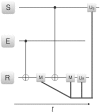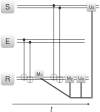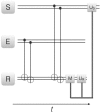Basic protocols in quantum reinforcement learning with superconducting circuits
- PMID: 28487535
- PMCID: PMC5431677
- DOI: 10.1038/s41598-017-01711-6
Basic protocols in quantum reinforcement learning with superconducting circuits
Abstract
Superconducting circuit technologies have recently achieved quantum protocols involving closed feedback loops. Quantum artificial intelligence and quantum machine learning are emerging fields inside quantum technologies which may enable quantum devices to acquire information from the outer world and improve themselves via a learning process. Here we propose the implementation of basic protocols in quantum reinforcement learning, with superconducting circuits employing feedback- loop control. We introduce diverse scenarios for proof-of-principle experiments with state-of-the-art superconducting circuit technologies and analyze their feasibility in presence of imperfections. The field of quantum artificial intelligence implemented with superconducting circuits paves the way for enhanced quantum control and quantum computation protocols.
Conflict of interest statement
The author declares that they have no competing interests.
Figures





Similar articles
-
Multiqubit and multilevel quantum reinforcement learning with quantum technologies.PLoS One. 2018 Jul 19;13(7):e0200455. doi: 10.1371/journal.pone.0200455. eCollection 2018. PLoS One. 2018. PMID: 30024914 Free PMC article.
-
Quantum control of bosonic modes with superconducting circuits.Sci Bull (Beijing). 2021 Sep 15;66(17):1789-1805. doi: 10.1016/j.scib.2021.05.024. Epub 2021 May 31. Sci Bull (Beijing). 2021. PMID: 36654386 Review.
-
Superconducting quantum interference device readout circuit with tunable feedback polarity.Rev Sci Instrum. 2023 Sep 1;94(9):094707. doi: 10.1063/5.0162805. Rev Sci Instrum. 2023. PMID: 37768134
-
Quantum generative adversarial learning in a superconducting quantum circuit.Sci Adv. 2019 Jan 25;5(1):eaav2761. doi: 10.1126/sciadv.aav2761. eCollection 2019 Jan. Sci Adv. 2019. PMID: 30746476 Free PMC article.
-
Closed-loop and robust control of quantum systems.ScientificWorldJournal. 2013 Aug 7;2013:869285. doi: 10.1155/2013/869285. eCollection 2013. ScientificWorldJournal. 2013. PMID: 23997680 Free PMC article. Review.
Cited by
-
A high-bias, low-variance introduction to Machine Learning for physicists.Phys Rep. 2019 May 30;810:1-124. doi: 10.1016/j.physrep.2019.03.001. Epub 2019 Mar 14. Phys Rep. 2019. PMID: 31404441 Free PMC article.
-
A Variational Quantum Linear Solver Application to Discrete Finite-Element Methods.Entropy (Basel). 2023 Mar 28;25(4):580. doi: 10.3390/e25040580. Entropy (Basel). 2023. PMID: 37190367 Free PMC article.
-
Quantum machine learning.Nature. 2017 Sep 13;549(7671):195-202. doi: 10.1038/nature23474. Nature. 2017. PMID: 28905917
-
Supervised Quantum Learning without Measurements.Sci Rep. 2017 Oct 20;7(1):13645. doi: 10.1038/s41598-017-13378-0. Sci Rep. 2017. PMID: 29057923 Free PMC article.
-
Multiqubit and multilevel quantum reinforcement learning with quantum technologies.PLoS One. 2018 Jul 19;13(7):e0200455. doi: 10.1371/journal.pone.0200455. eCollection 2018. PLoS One. 2018. PMID: 30024914 Free PMC article.
References
-
- Russell, S. & Norvig, P. Artificial Intelligence: A Modern Approach 3rd. ed. (Pearson, New Jersey, 2010).
-
- Sutton, R. S. & Barto, A. G. Reinforcement Learning: An Introduction (MIT Press, Cambridge, MA, 1998).
-
- Nielsen, M. A. & Chuang, I. L. Quantum Computation and Quantum Information (Cambridge University Press, Cambridge, UK, 2000).
-
- Schuld M, Sinayskiy I, Petruccione F. An introduction to quantum machine learning. Contemp. Phys. 2015;56:172–185. doi: 10.1080/00107514.2014.964942. - DOI
-
- Biamonte, J. et al. Quantum Machine Learning. arXiv:1611.09347 (2016).
Publication types
LinkOut - more resources
Full Text Sources
Other Literature Sources

